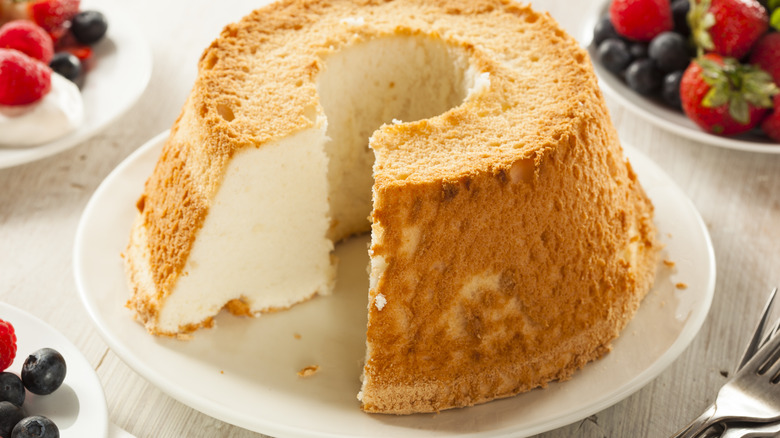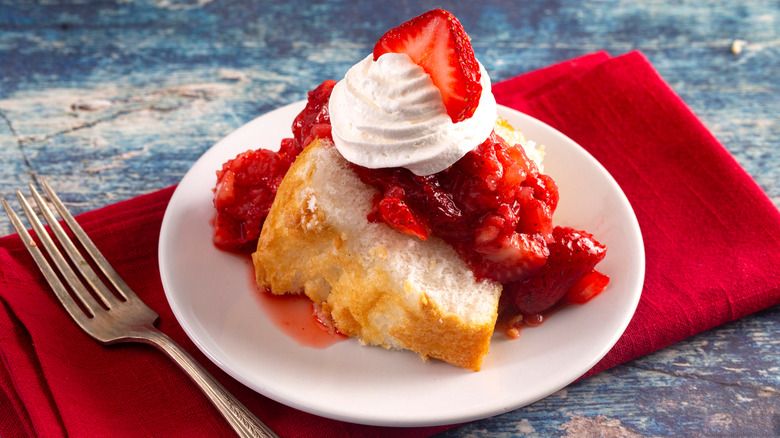How To Ensure Fluffy Angel Food Cake Every Time
What widely loved dessert is as soft as white clouds on a sunny day and tastes like heaven? Why, it's angel food cake, of course! Whether you prefer indulging in a slice (or two) of angel food cake drizzled with delectable strawberry sauce, creamy chocolate syrup, or by its plain ol' self, you truly can't go wrong. From its unique recipe, to its strategically shaped mold, to its sensitive preparation process, angel food is sometimes considered as naughty as it is refined.
What makes this heavenly treat so special? Angel food cake made its debut in America, although the true developer of the recipe is still up for debate. For one, there was a recipe for sponge cake in The Kentucky Housewife, an 1839 cookbook by Lettice Bryan, that is eerily similar to modern day angel food. Angel food cake became even more in demand when the rotary egg beater became a widely available home kitchen appliance in the 19th Century. An angel food cake recipe from a St. Louis-based chef was featured in The New York Times in 1880, causing its popularity to skyrocket. And the ever-famous "The Joy of Cooking" from 1931 contains a recipe for angel food cake, which is aptly listed under the "foam cakes" category (via Martha Stewart).
Whoever the real inventor was, one can only hope they got their wings. But how can today's bakers make sure they are whipping up the ultimate (and fluffiest) angel food cake?
What are the tricks to baking fluffy angel food cake every time?
Baking an angel food cake is no easy feat, especially for amateur or even intermediate home bakers. Angel food cake often comes out of the oven deflated, overly sticky or chewy, or not as white in color as one would hope. However, there are a few tried-and-true tricks that should help make the end result light, fluffy, sweet, just the right level of moist, and undeniably delicious.
Angel food calls for minimal ingredients, but precise measurements and careful mixing are key. Angel food cake gets its iconic white batter from its use of egg whites (i.e., its lack of egg yolks). Butt make sure your eggs are room temperature, since cold egg whites don't whip as well, according to Taste of Home. While many cakes and baked goods call for baking soda and/or baking powder as leavening agents, angel food cake's recipe requires cream of tartar, as well as beating egg whites to a foamy consistency with stiff peaks, creating their delicate structure. Over-beating the egg whites changes their chemistry, yielding a dense cake.
It's also important to use actual cake flour rather than regular flour or whole wheat flour in your recipe, Tip Hero suggests. The reason? Cake flour has a lower protein content, making the batter less tender. And last but not least, as tempting as it sounds (and no matter how much you're used to greasing the pan with butter or cooking spray), resist the temptation. If the angel food mold becomes too greasy, it won't rise properly. To make sure the cake is able to slide out of the mold with ease, cool it upside-down.

